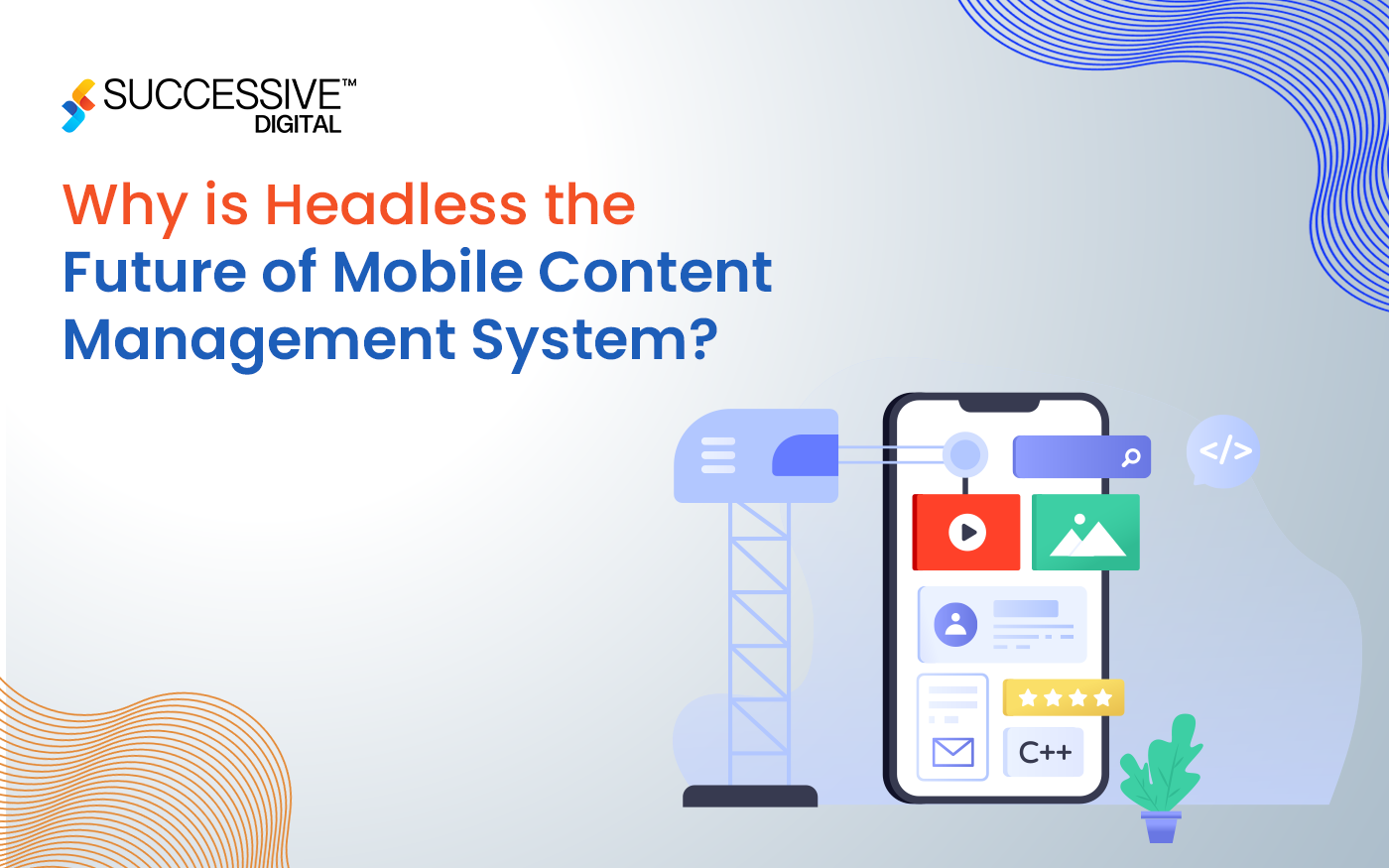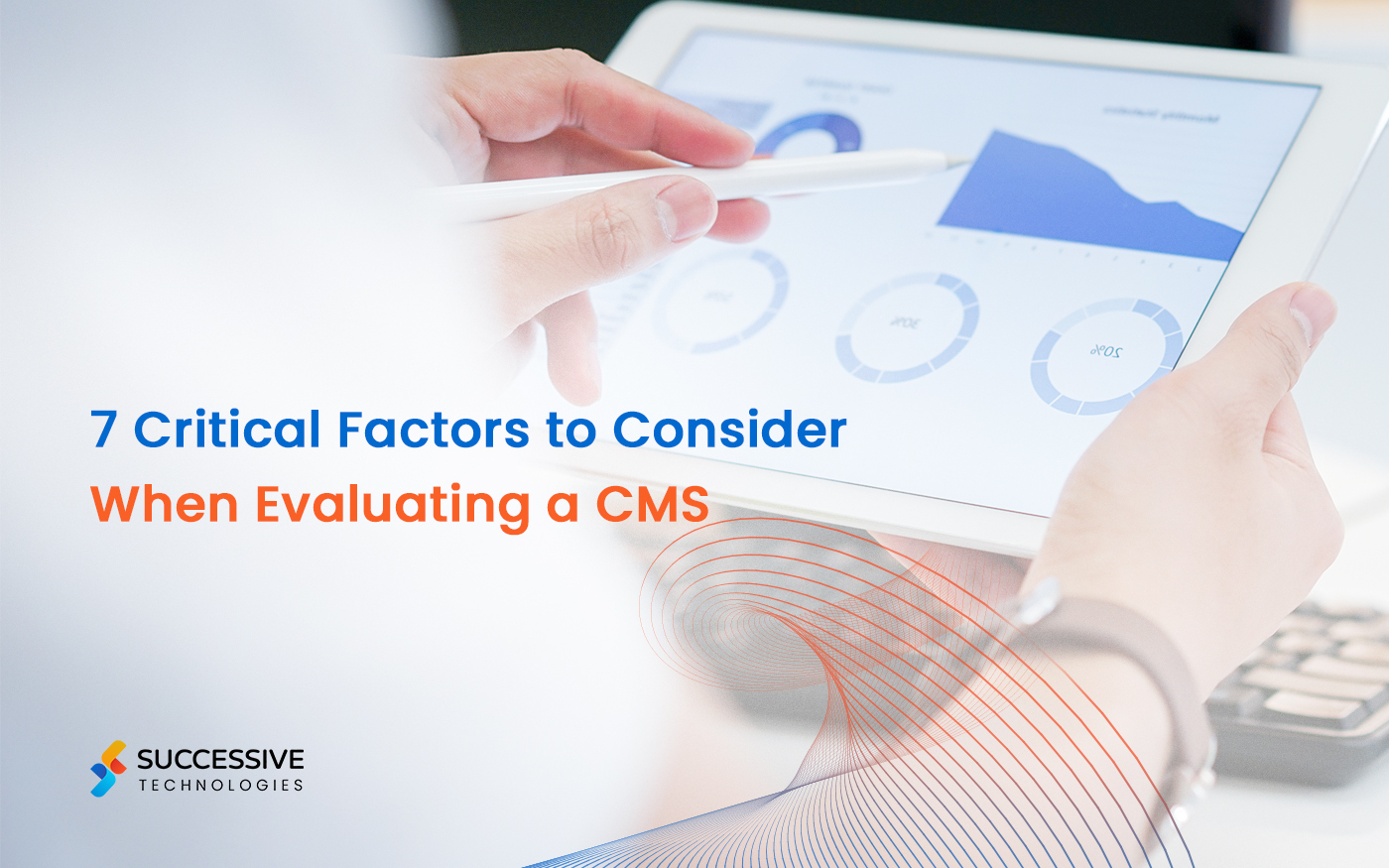Users today demand constant content access, expecting it to be consistent across multiple content distribution channels. This surge has led to an increase in the availability of headless content management systems. A headless content management system decouples the backend content repository from the presentation layer, giving enterprises complete control over their content operations. However, they often get stuck in a dilemma: which enterprise CMS is best? Various options are available in the market; however, Strapi emerges as the top enterprise CMS platform. Its headless architecture and API-driven content delivery system streamline content operations end-to-end while ensuring enterprise data is protected from unauthorized access.
Before understanding the significance of Strapi Enterprise CMS, let’s first have an overview of the enterprise’s content requirements.
Understanding Enterprise CMS Needs
Enterprises deal with vast content that must be managed efficiently to improve customer experiences. In this case, they require a robust CMS platform that offers scalability, flexibility, security, and ease of integration with existing systems.
Traditional content management systems based on monolithic architecture fail to offer scalability and omnichannel content delivery. On the contrary, a headless CMS offers complete flexibility to manage content no matter the volume, integrate existing systems and third-party software, and deliver it across multiple channels via APIs while ensuring content governance.
To learn more about this concept, read our blog on how investing in enterprise content management can transform digital experiences. The blog will also help you understand the benefits of enterprise headless CMS.
An Overview of Strapi Enterprise CMS
With 20k live websites, Strapi is a robust, fully customizable, enterprise-ready Headless CMS that enables businesses to organize and distribute digital content seamlessly. It is an open-source Node.js-based platform providing organizations unparalleled flexibility, scalability, and complete control over their content management and delivery processes.
Its headless architecture decouples the content repository from the presentation layer, enabling seamless content delivery across all touchpoints. This decoupling also allows the developers of Strapi development company to integrate preferred frontend frameworks, plugins, and APIs to extend the functionality of the CMS based on your specific needs.
Furthermore, Strapi’s intuitive user interface simplifies content creation, management, and distribution processes, while its extensive customization options allow organizations to adapt the CMS to their unique needs.
Headless CMS Strapi: What Makes It The Best Choice for Enterprise Content Management?

Strapi Enterprise CMS serves as a go-to content tool for modern content management with its “Enterprise edition” capability. It offers robust features tailored to manage and streamline enterprise-level content operations. These features include:
-
Improved Content Management
With Strapi, you can facilitate improved content management. It allows you to edit, manage, store, and share all enterprise content assets, such as articles, documents, or marketing materials, in one place: a centralized content repository.
This way, you can optimize content from a single source of truth and deliver it across all channels, ensuring it is tailored for each target customer.
-
Built-in Authentication System
Large-scale organizations hold massive amounts of data that require a secure system to manage them in a single repository. Hence, this enterprise CMS has a built-in system of permissions within its centralized content repository, including role-based access control (RBAC) and single-sign-on authentication to provide permission-based access to the admin panel and authenticate your content processes.
RBAC allows you to set up different user roles based on the hierarchy and needs (e.g., admin, content manager, editor, and viewer) with varying access levels to manage and secure customer data. This ensures only authorized personnel can edit, add, and delete specific data and minimizes system vulnerabilities.
Single-sign-on authentication helps connect Strapi with your preferred authentication providers and protocols, such as Active Directory, Okta, Auth0, Keycloak, OAuth, and GitHub. By leveraging this function, you can secure the authentication process and access the admin panel using a specific provider instead of logging in with a regular Strapi administrator account.
-
Customizable Content Workflows
With the Strapi enterprise edition, you get a platform to create customizable content workflows. It allows you to create, review, validate, and publish content directly in the admin dashboard. With this functionality, you can configure a custom workflow and predefine review stages to improve the process and validate the content through your defined stages corresponding to their internal processes, such as “to do, in progress, ready to review, and reviewed.” This enables effective collaboration amongst complex, cross-functional teams and a faster and more consistent flow of content from creation to delivery.
-
Content Audit Logs
Integrating Strapi enterprise CMS within your system allows you to initiate the content audit process. Here, you can track and review the access or changes made to sensitive data. Additionally, you can report unusual changes to reduce vulnerabilities and data breaches. This feature enables you to get a detailed audit report of all content-related activities within your organization.
Moreover, the defined audit logs generated within Strapi’s dashboard help prevent unauthorized activity, provide insights during incident reviews, and implement compliance standards to ensure higher security.
-
Flexible Integrations
Enterprises have multiple systems and software; hence, they require a content management system that can easily integrate with your existing software. The flexible nature of Strapi enterprise CMS allows the Strapi development company to integrate it seamlessly within your system, ensuring smooth data flow within systems. The platform also allows flexible integrations with third-party APIs, databases, and tools, allowing you to extend its functionality depending on your specific requirements. This way, you can improve your operations while adapting to evolving technology trends to build better customer experiences. You can also read our comprehensive guide on how Strapi can help set up an eCommerce store and transform shopping experiences.
-
Managed Content Updates with Releases
Releases is one of the most significant Strapi enterprise content management features. It serves as a structured approach to the content rollout process. This feature allows you to group content entries easily and put them in specific release categories, where you can choose whether to publish or unpublish them. It gives them labels such as ‘ready to publish,’ ‘already published,’ and ‘changes required.’ for more organized content management.
Additionally, within the Strapi dashboard, you get a ‘Release tab’ to quickly locate and handle your content changes in one place. For a deep dive, you can go through the release interface, which provides a detailed status of all your releases. This makes tracking, arranging, and controlling content updates for your website or app easier while ensuring a streamlined and organized content delivery process.
Conclusion
In today’s competitive digital world, enterprises strive to offer their customers the best possible digital experience. hence, they need a robust enterprise content management system such as Strapi to streamline their content-based operations and deliver content across every channel their customers usually use. With the Strapi enterprise edition, businesses can take full ownership of their content processes and deliver engaging digital experiences.
So, are you ready to transform digital experiences with Strapi Enterprise CMS? Get in touch with us!
Frequently Asked Questions
Strapi is a headless CMS that offers various benefits, such as flexibility, scalability, and customization. It gives enterprises complete control over their content and enables them to distribute content across multiple channels.
Strapi offers various enterprise content management features, making it an excellent fit for large-scale projects that require customizations. Its modular architecture and API-first approach make it highly scalable, and hence, it can reach high traffic volumes without compromising performance.
Strapi is a top enterprise CMS platform for optimizing end-to-end content operations. It offers robust backend support and enables developers to integrate preferred frontend frameworks, APIs, and tools to extend its functionality as per your requirements.












